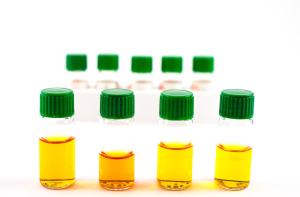Ureaplasma and Mycoplasma are two organisms (Mycoplasma genitalium and Ureaplasma urealyticum) that sexually transmit from person to person. They are very difficult to culture in the lab, which is the reason that lab technicians and do not assay them routinely. As the same antibiotics cover both strains, in most cases it is not important to distinguish between these strains. However, there is data to suggest that some of the resistant cases of Chlamydia are sometimes not due to Chlamydia resistance, but rather due to multi bacterial infections. When the physician eradicated Chlamydia these other pathogens stay behind that are more difficult to treat. Mostly they just need longer antibiotic treatment in order to eradicate them.
Some chronic ASTD’s require a referral to an STD clinic
These cases require a referral to an STD clinic that specializes in sexually transmitted diseases. Here is an electron microscopic image of Ureaplasma urealyticum. Mycoplasma genitalium is structurally different. Here is an electron microscopic image of Mycoplasma genitalium showing the darker mycoplasma pathogen (arrow) attached to an epithelial cell (lighter grey).
Other sexually transmitted diseases
Certain sexual practices can spread other infections between male and female genitals. Genitals carry their own flora that is undisturbed with heterosexual activities. However, with sexual practices that lead to anal-oral contamination, bowel flora such as Campylobacter, Shigella, Salmonella species suddenly transmit the genitals of a sexual partner.
Similarly, people can transmit viruses such as hepatitis A, B or C, giardiasis or amebiasis in a similar manner. Oral-genital contact transfers oral flora to the genitals, but they are not ready normally to deal with this flora. As a result itchiness with mixed anaerobic and aerobic bacterial growth as well as yeast infections of the genitals will result from this, which through regular heterosexual intercourse gets spread to the partner as well. The physician often needs to treat this with antibiotics for the aerobic bacteria, Metronidazol for the anaerobic bacteria and a topical cream against Candida albicans.
As old-fashioned as it may sound, these other sexually transmitted infections (and most venereal disease) can largely be prevented by going back to the basics: sexual relations in a monogamous relationship. Condoms reduce higher risk settings, but are only about 60% to 80% effective (key is the avoidance of risky behaviors).
References
1.The Merck Manual, 7th edition, by M. H. Beers et al., Whitehouse Station, N.J., 1999. Chapter 163.
2.James Chin et al., Editors: Control of Communicable Diseases Manual, 17th edition, 2000, American Public Health Association.
3.The Merck Manual, 7th edition, by M. H. Beers et al., Whitehouse Station, N.J., 1999. Chapter 164.
4. Feldman: Sleisenger & Fordtran’s Gastrointestinal and Liver Disease, 7th ed., © 2002 Elsevier : pages 1306-1307.
5. David L. Heymann,MD, Editor: Control of Communicable Diseases Manual, 18th edition, 2004, American Public Health Association.







